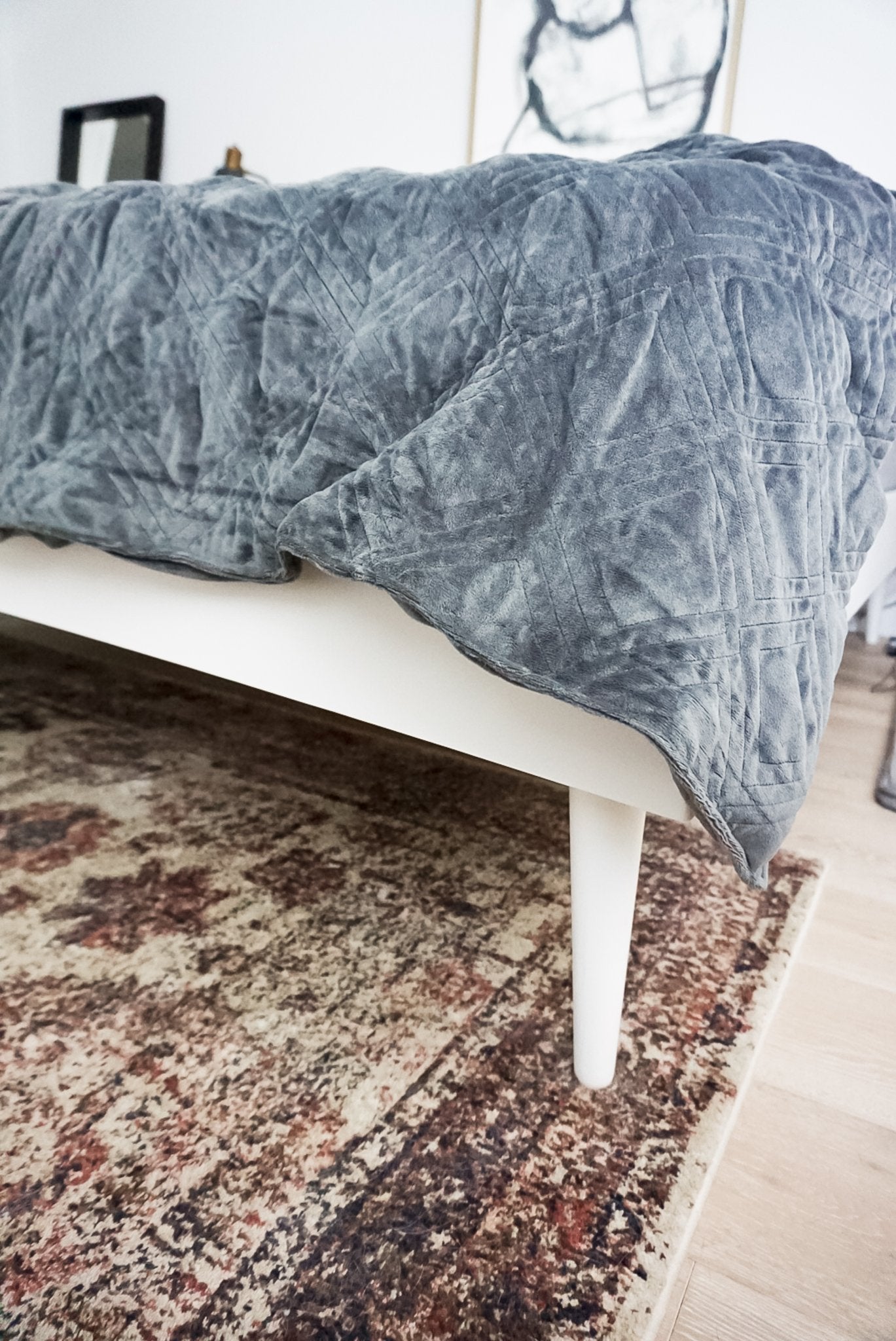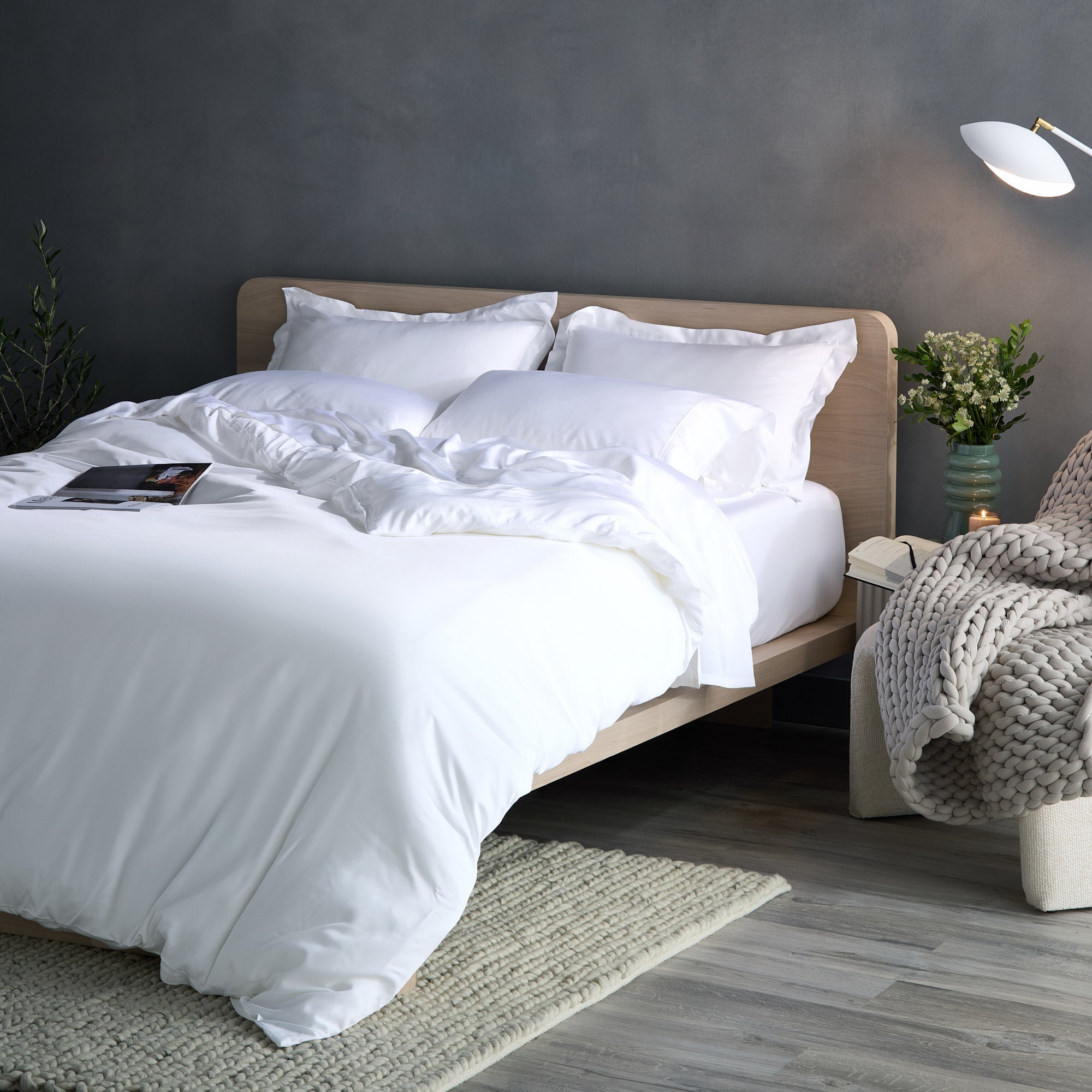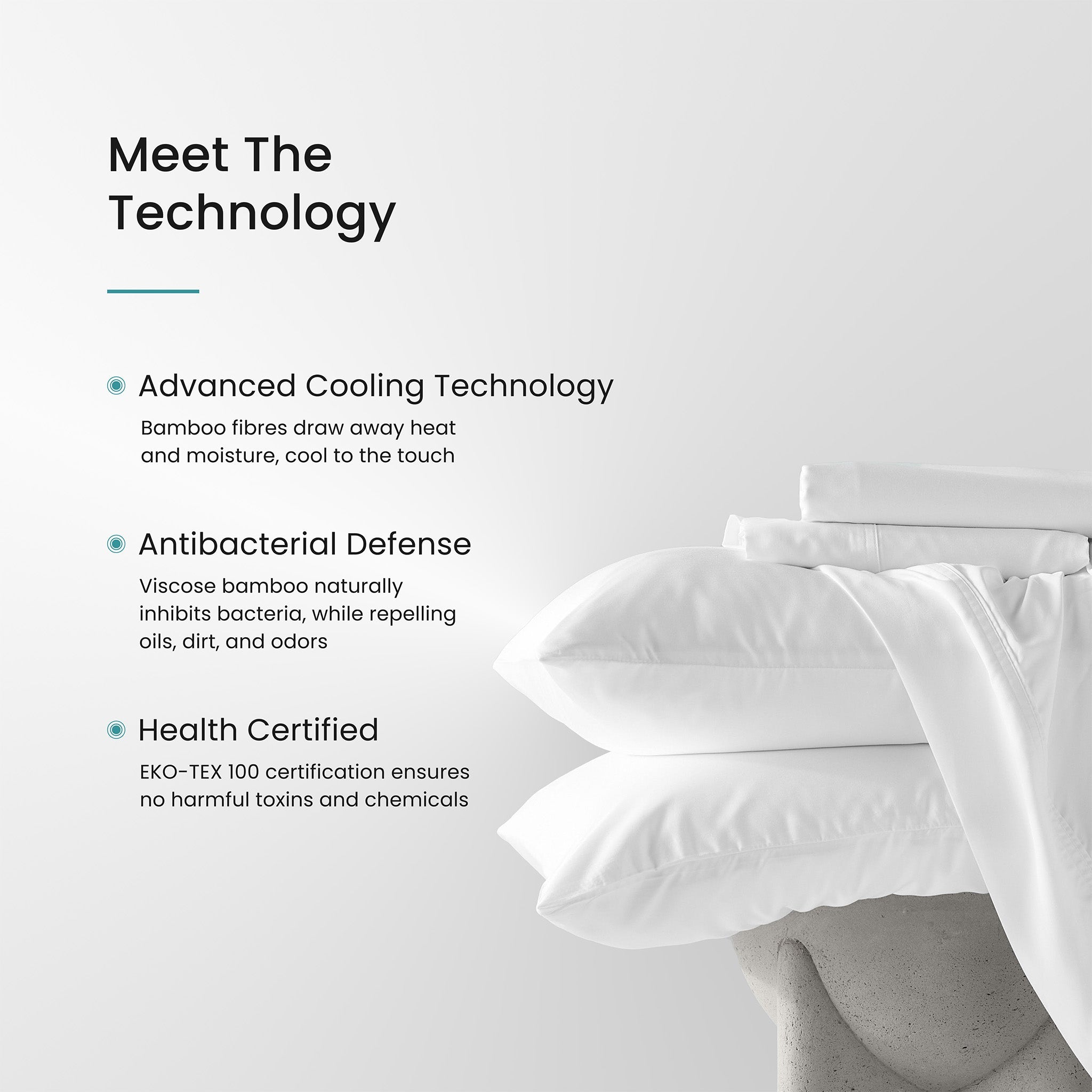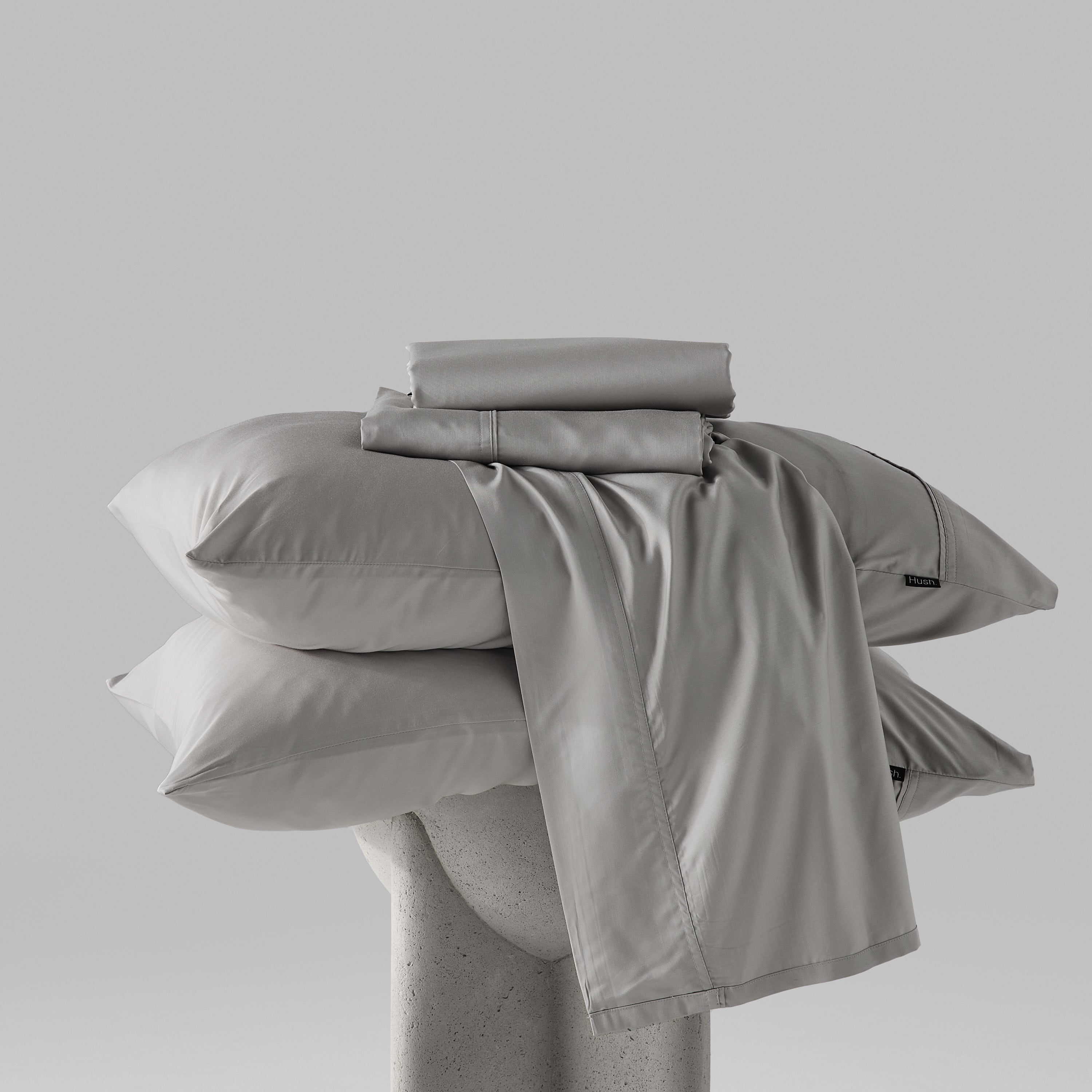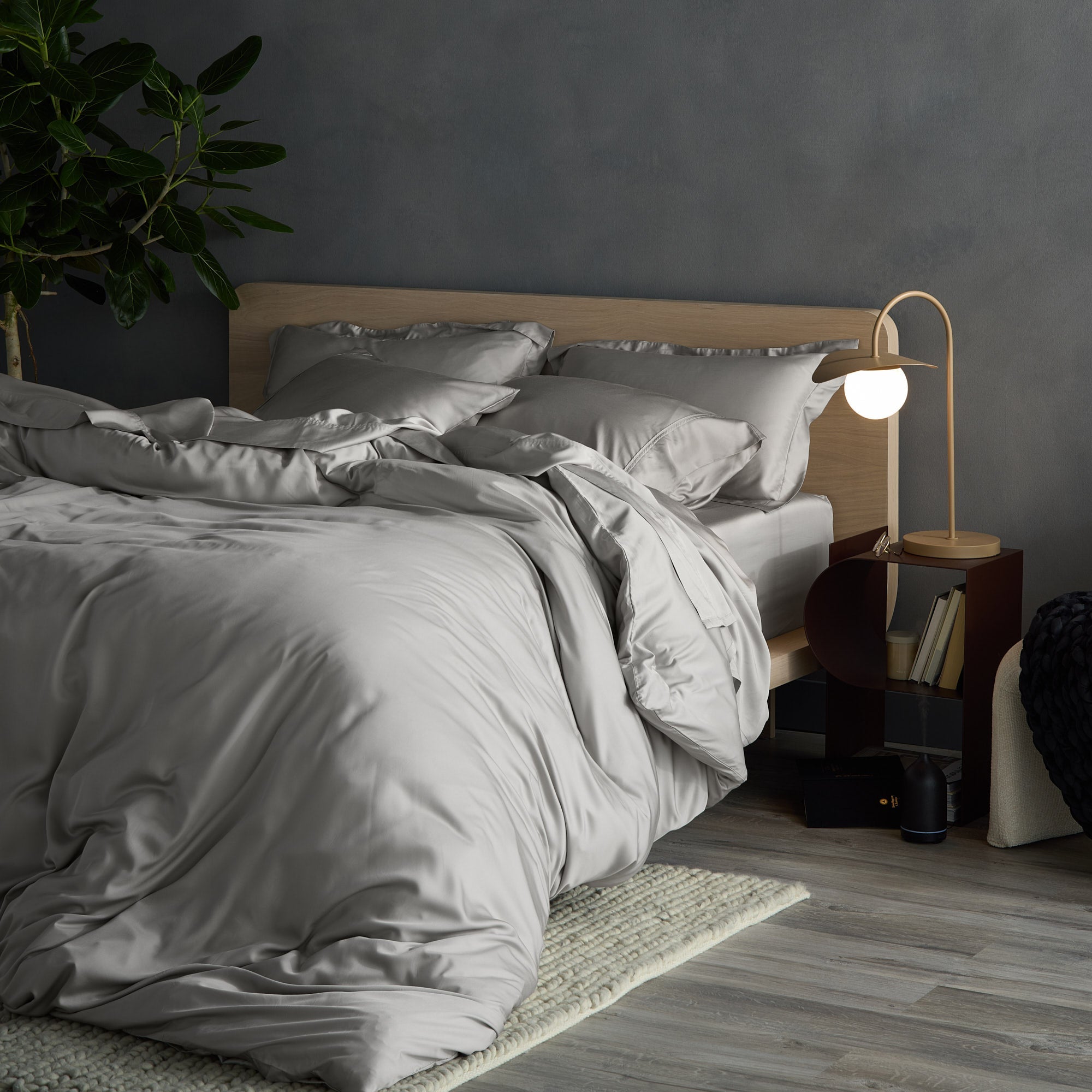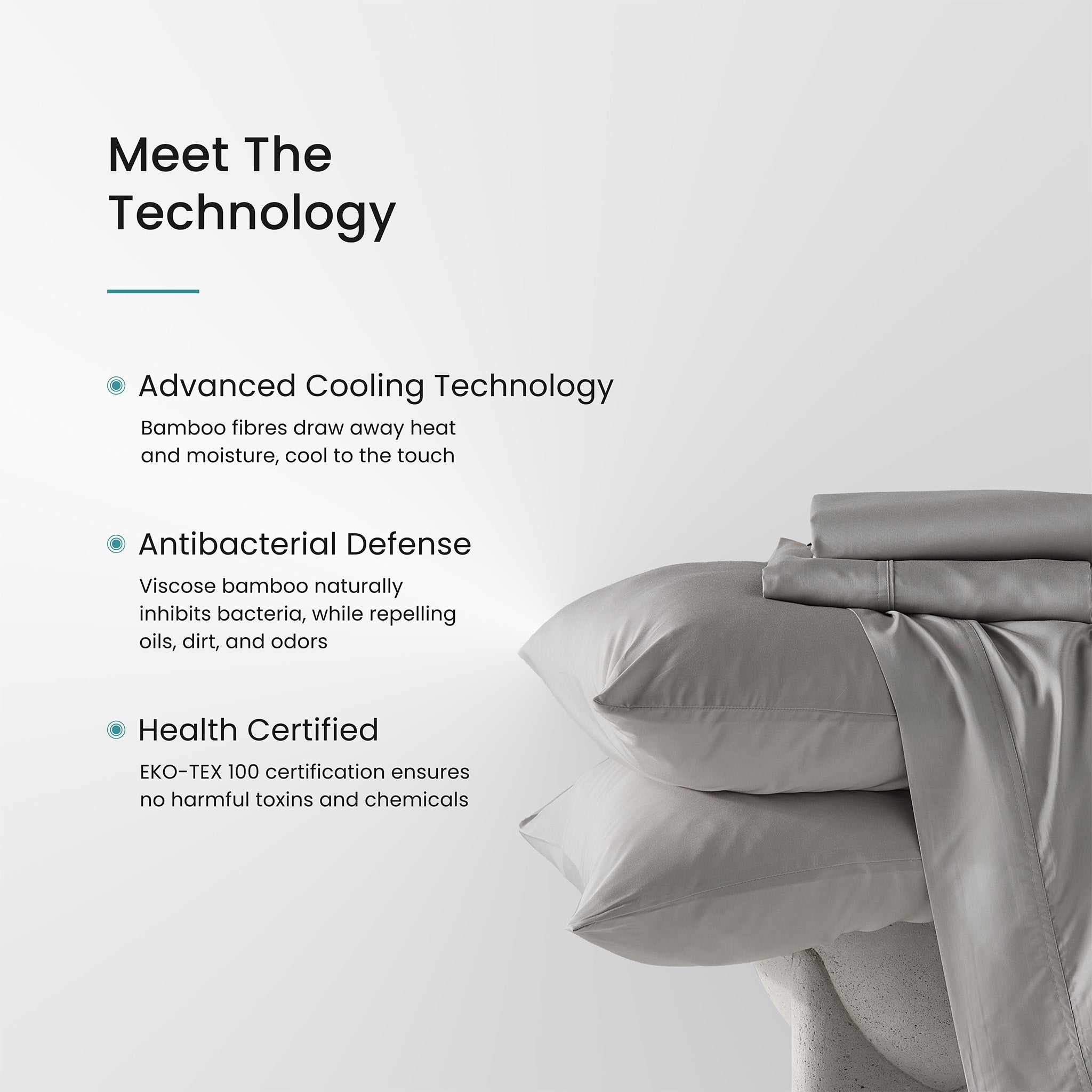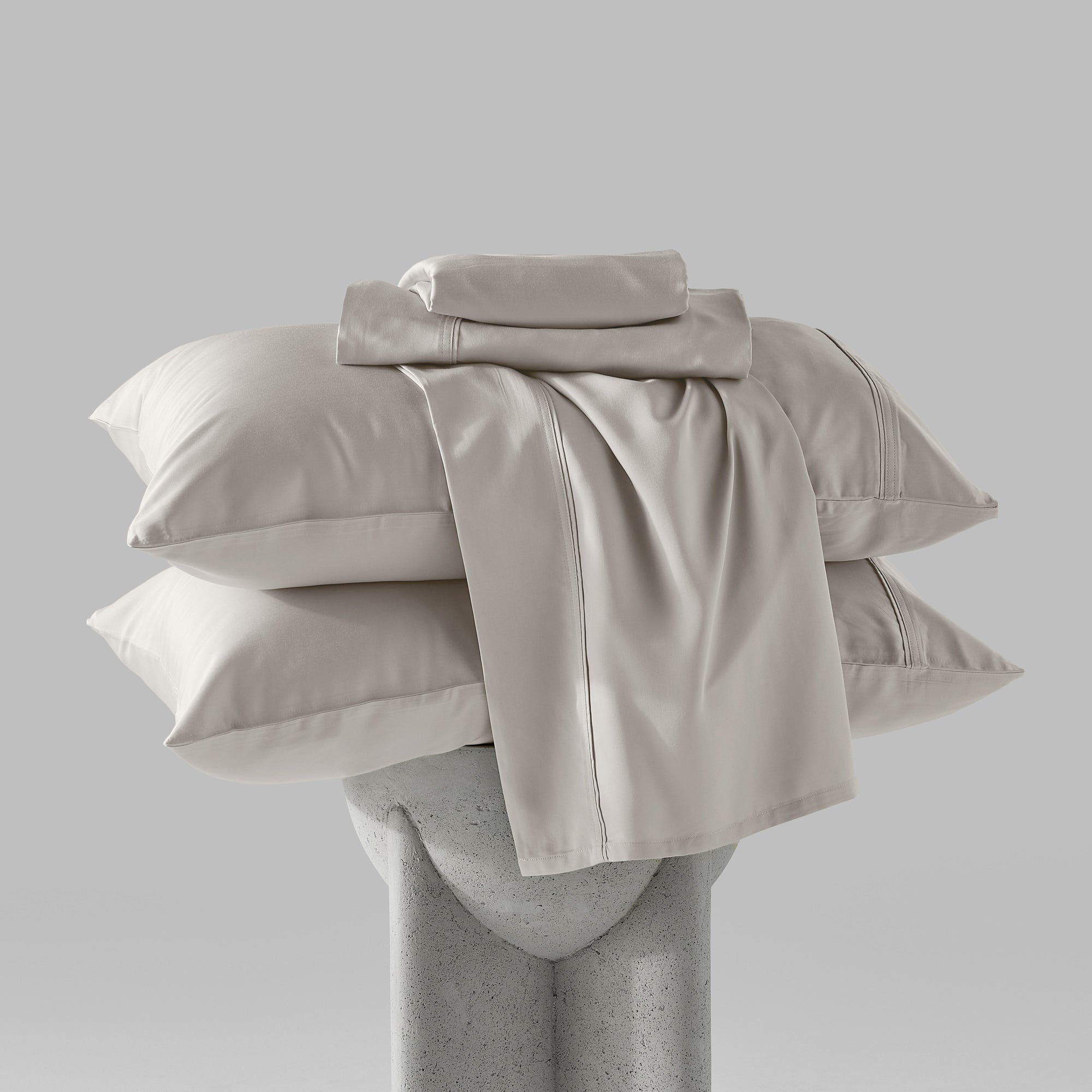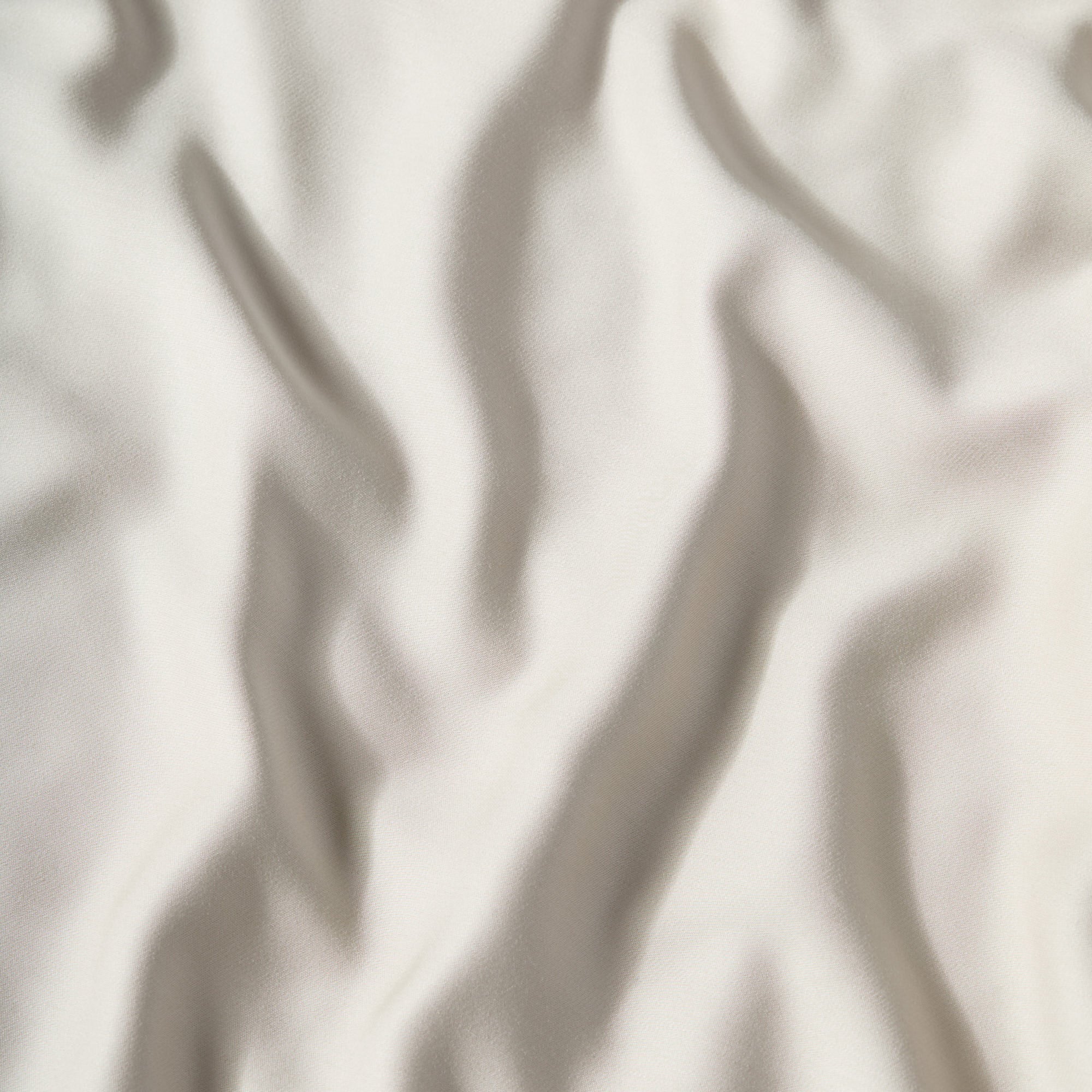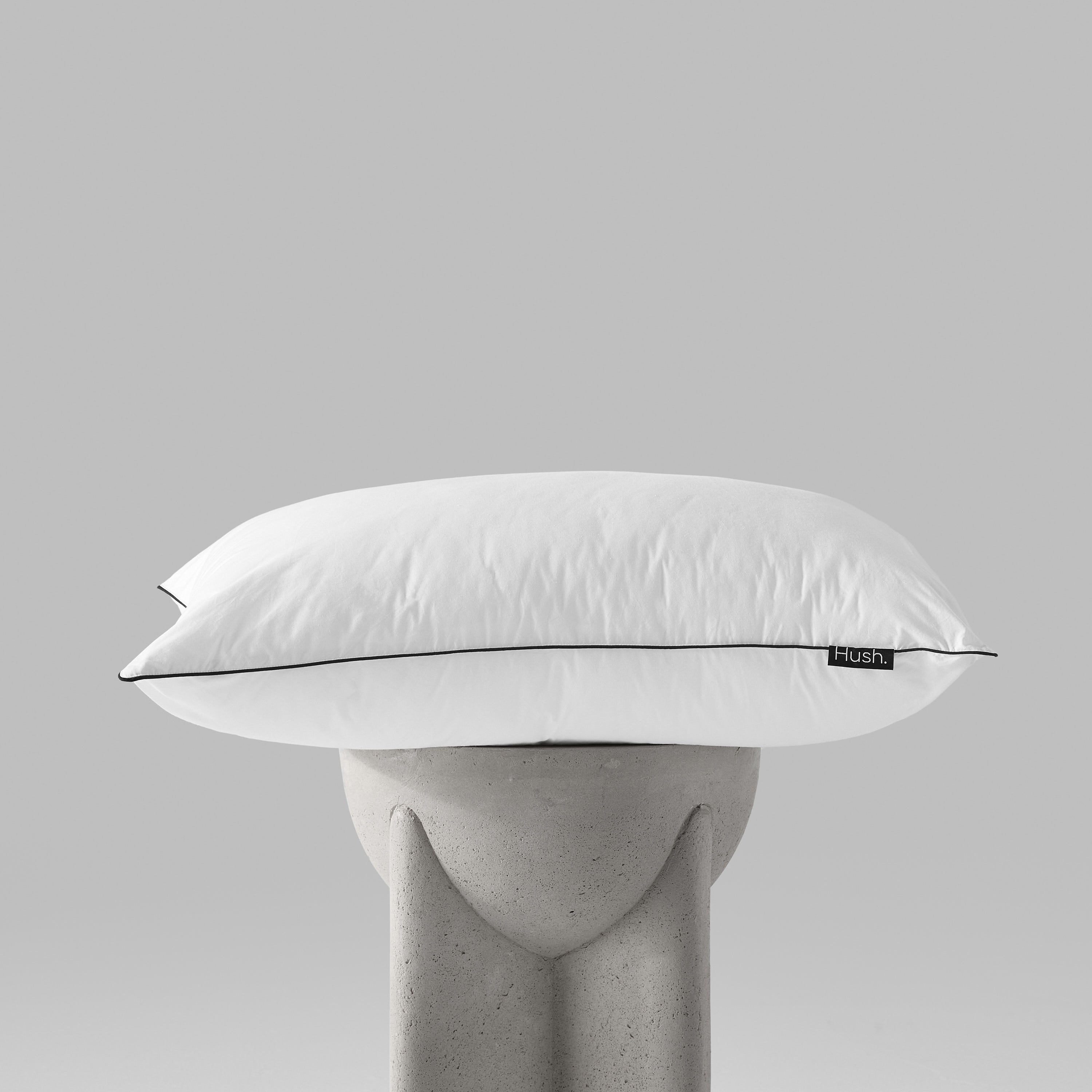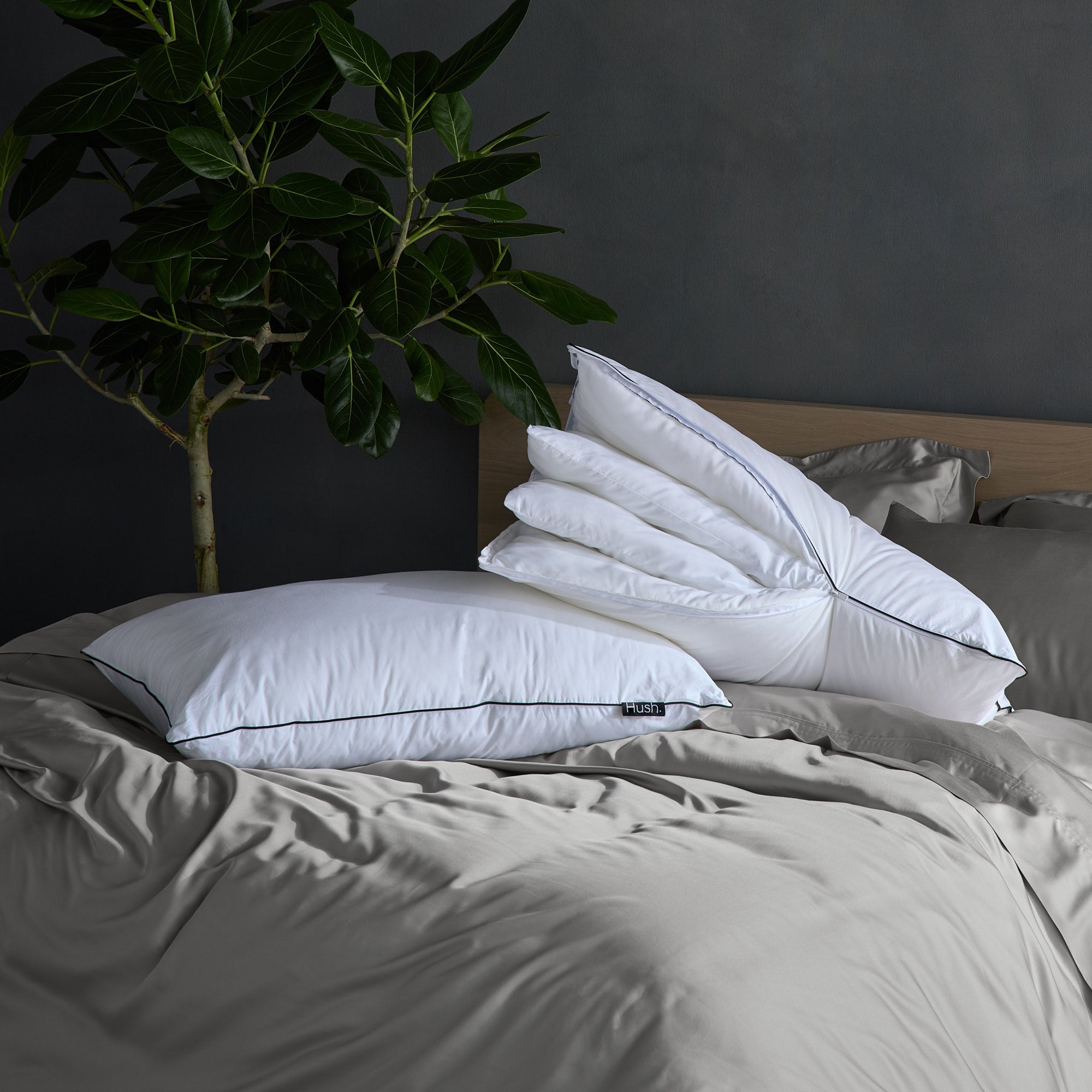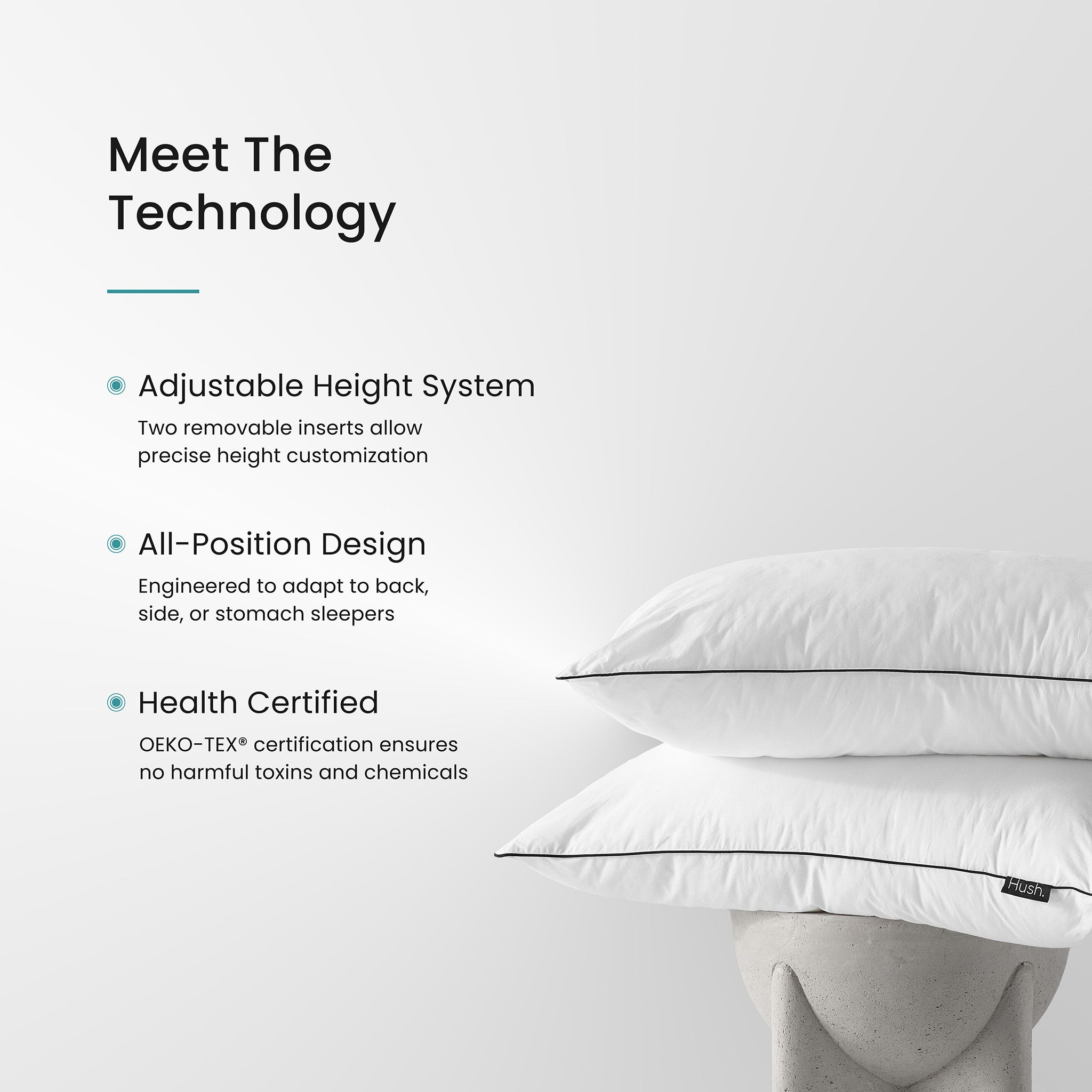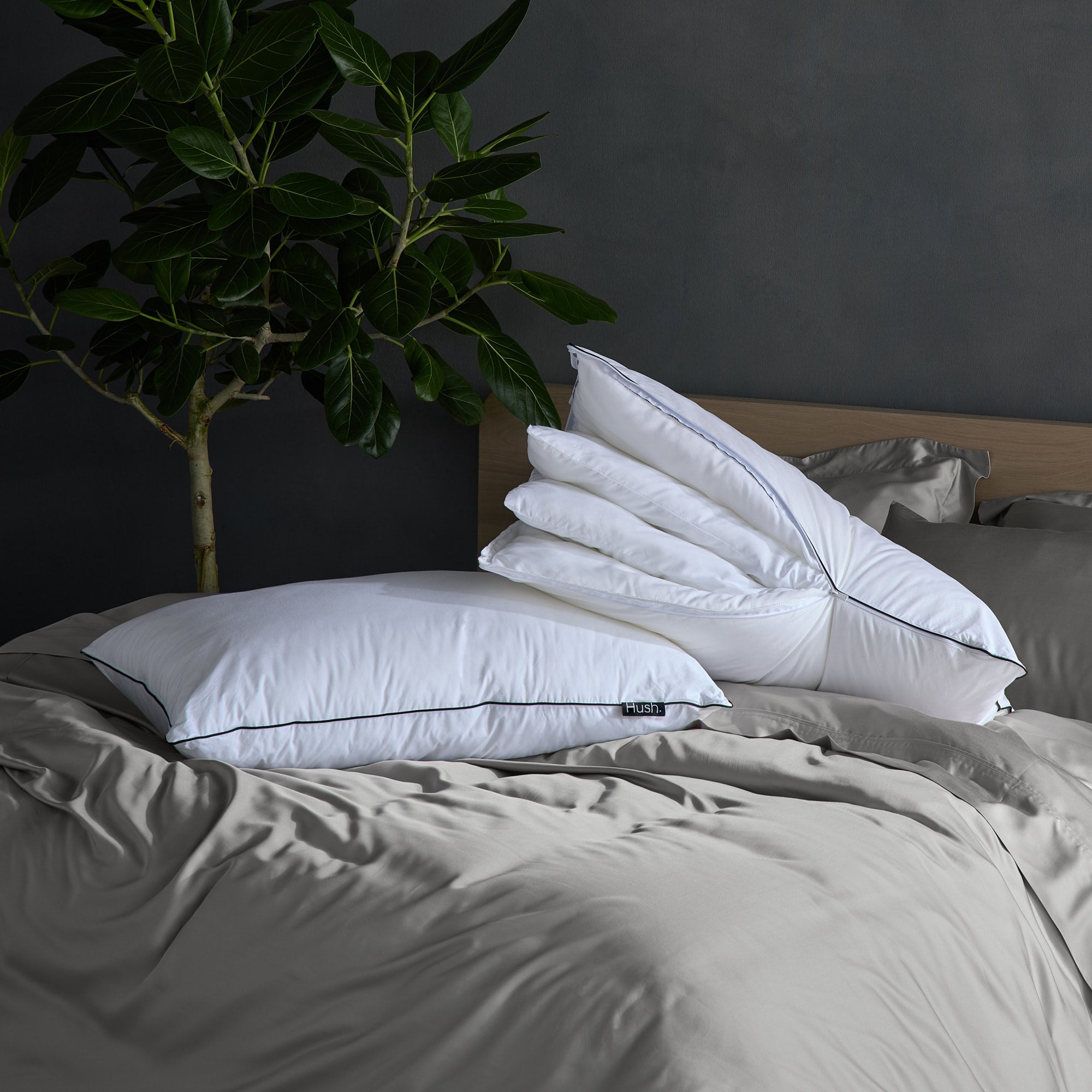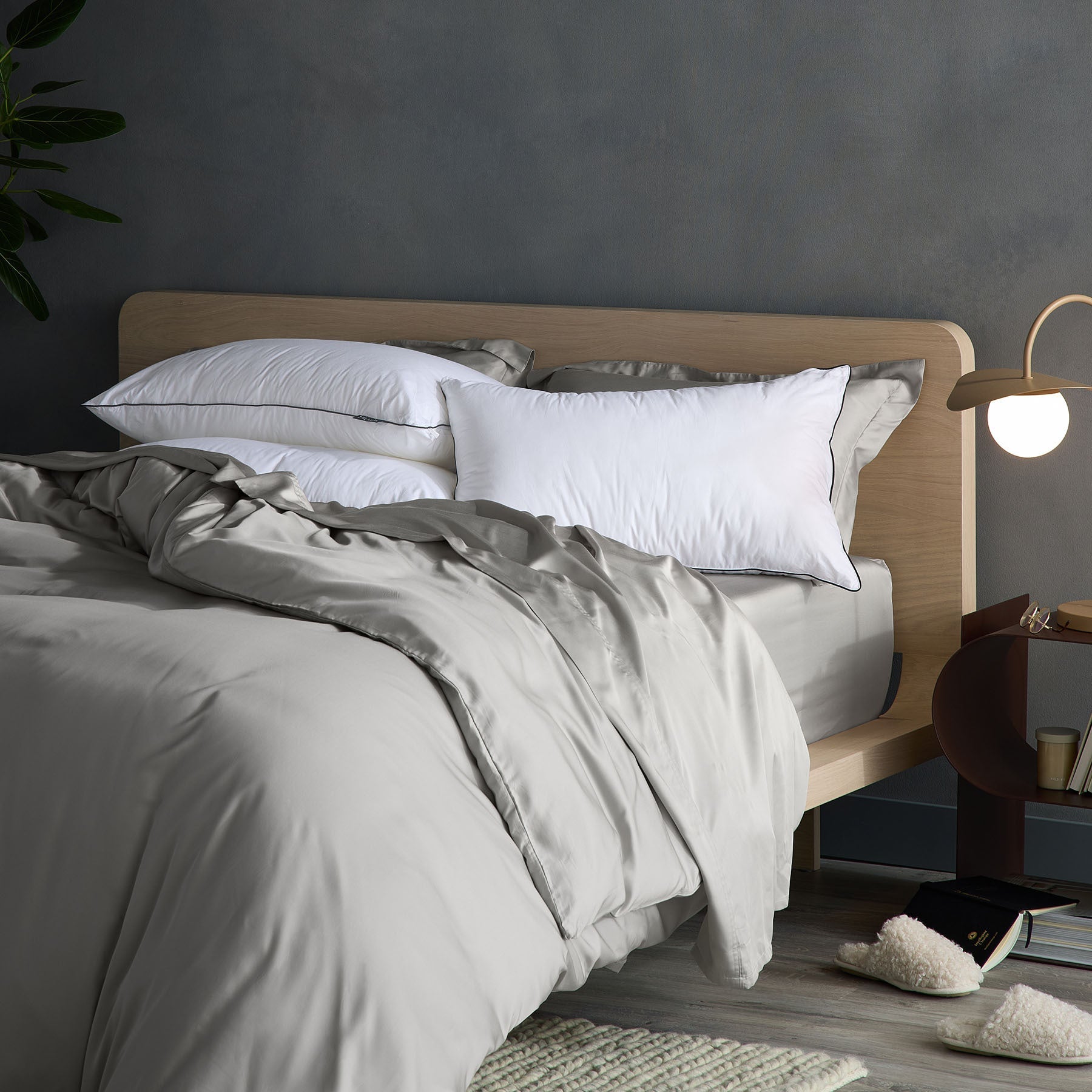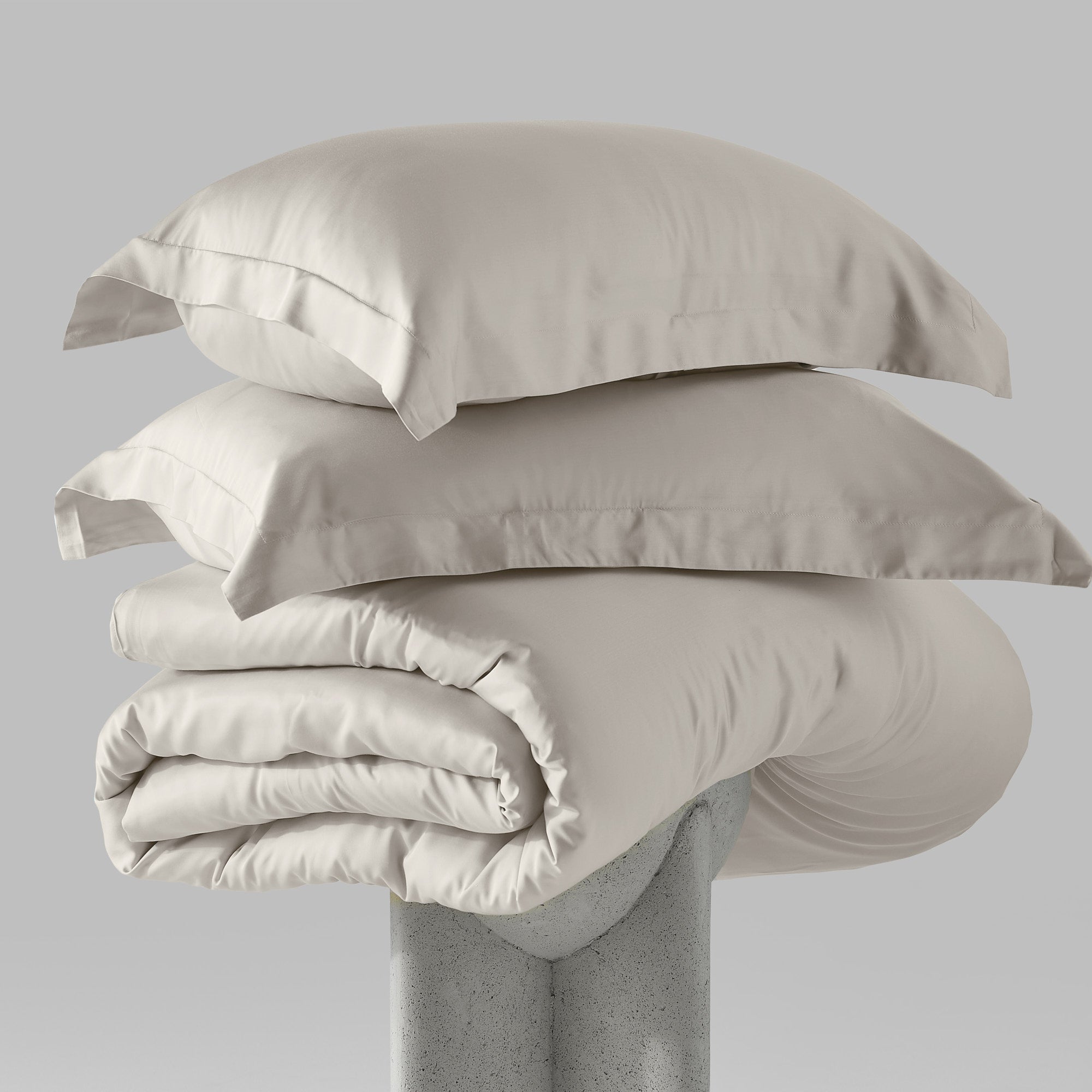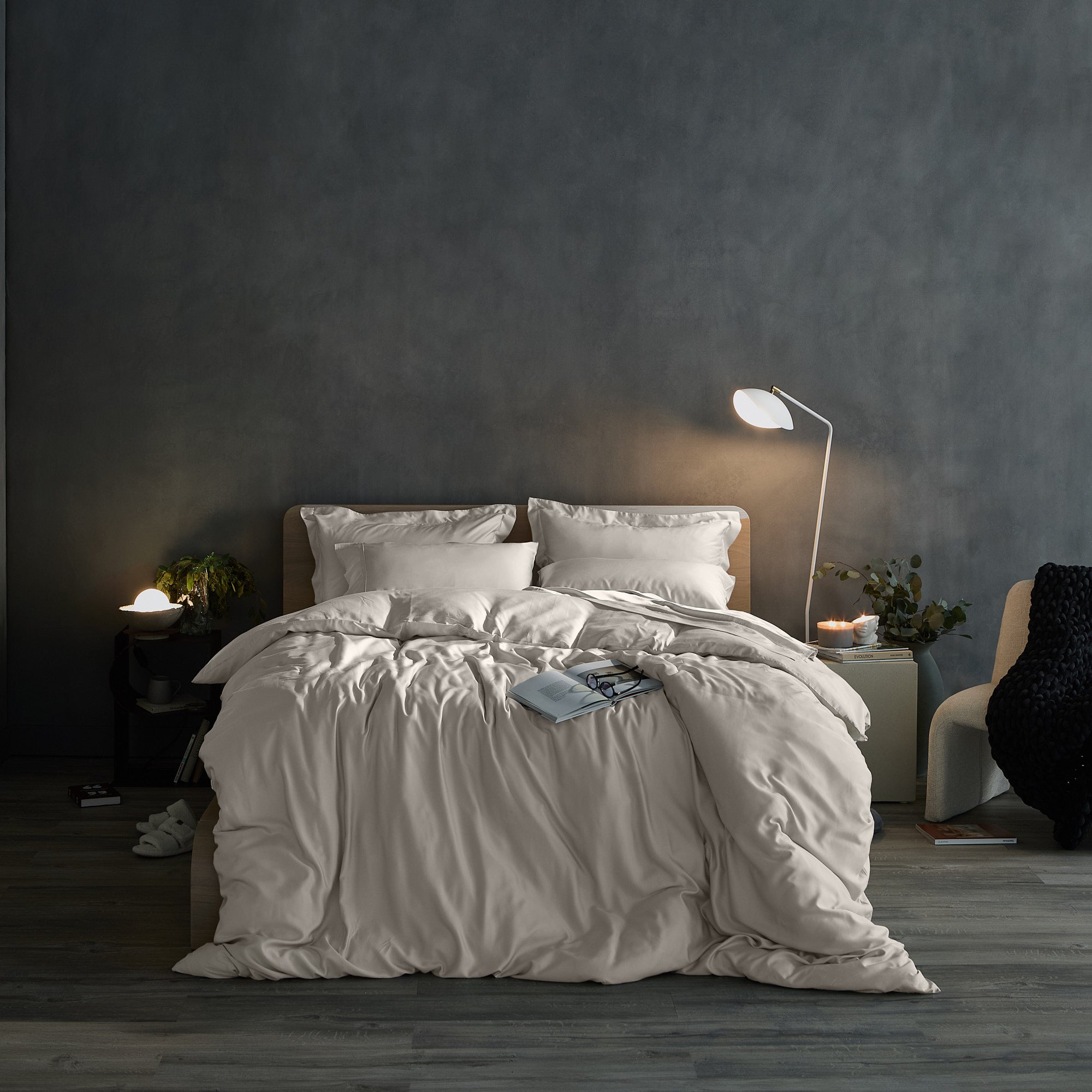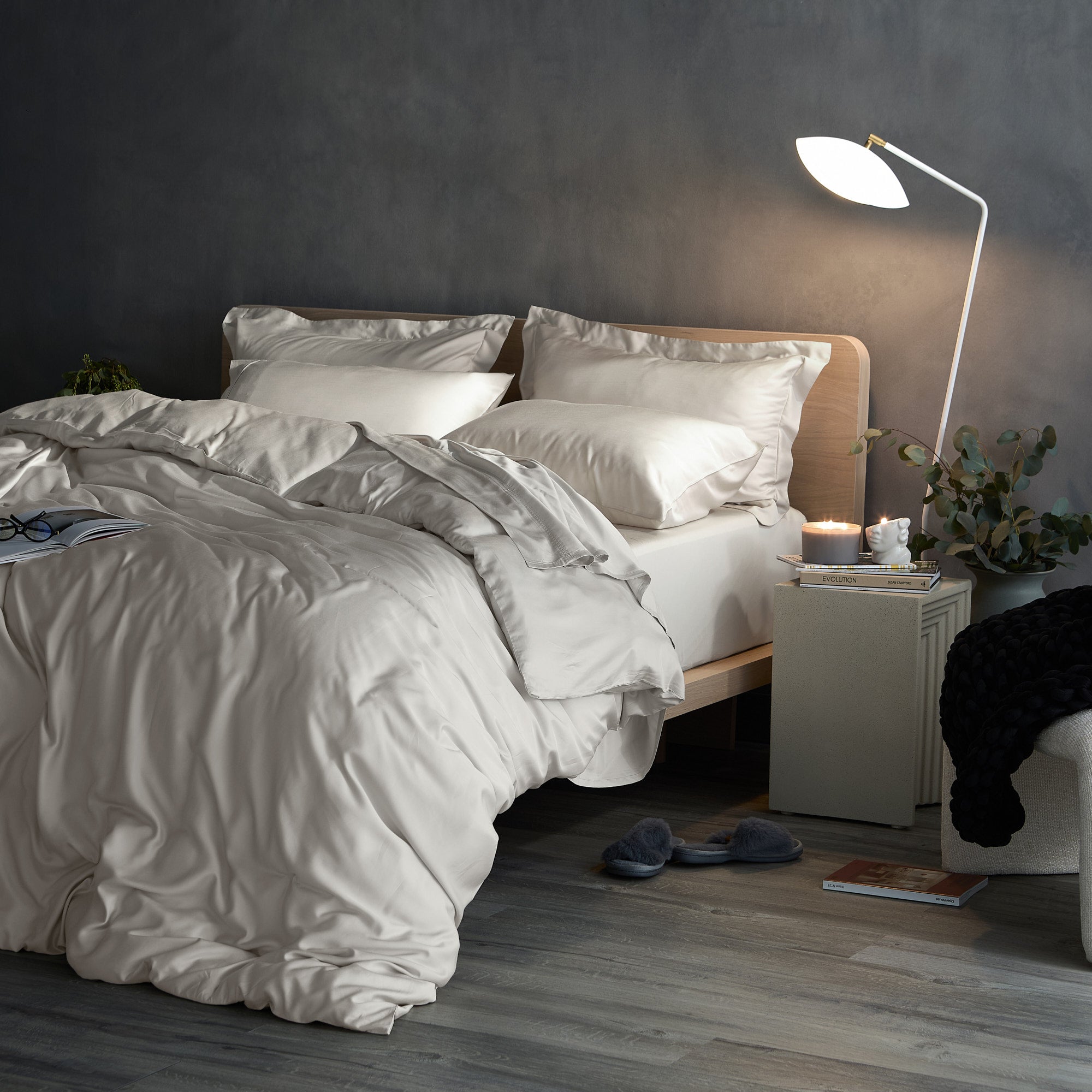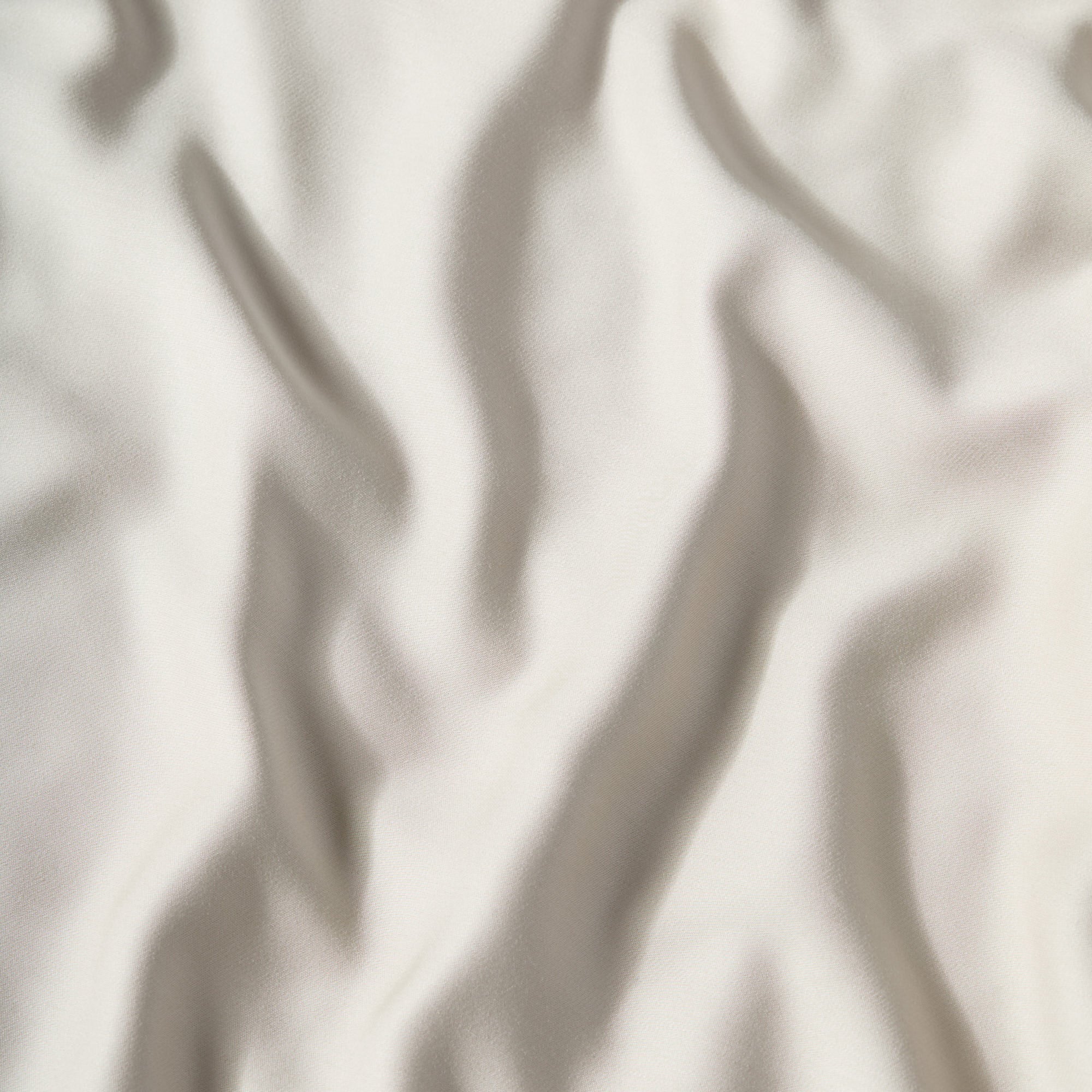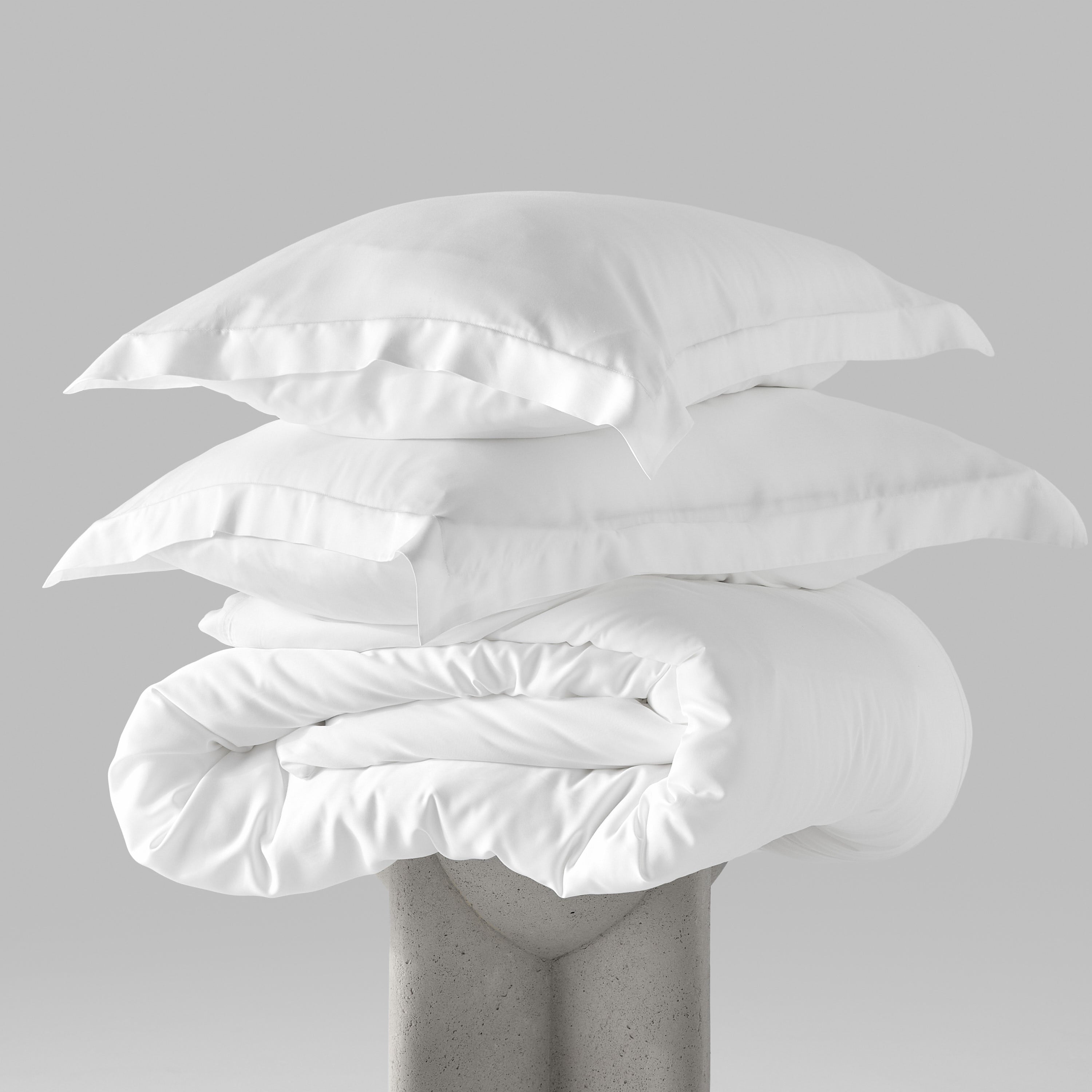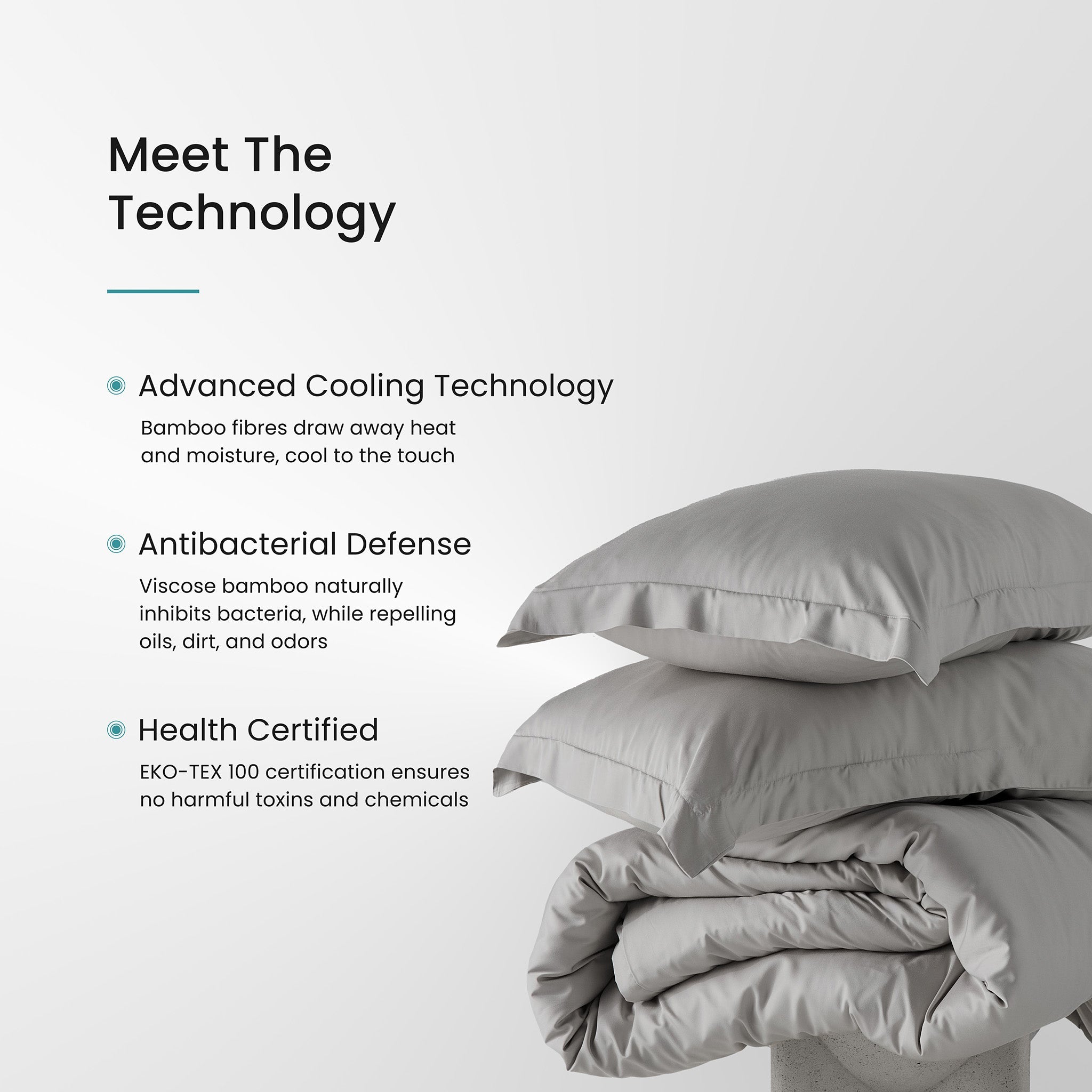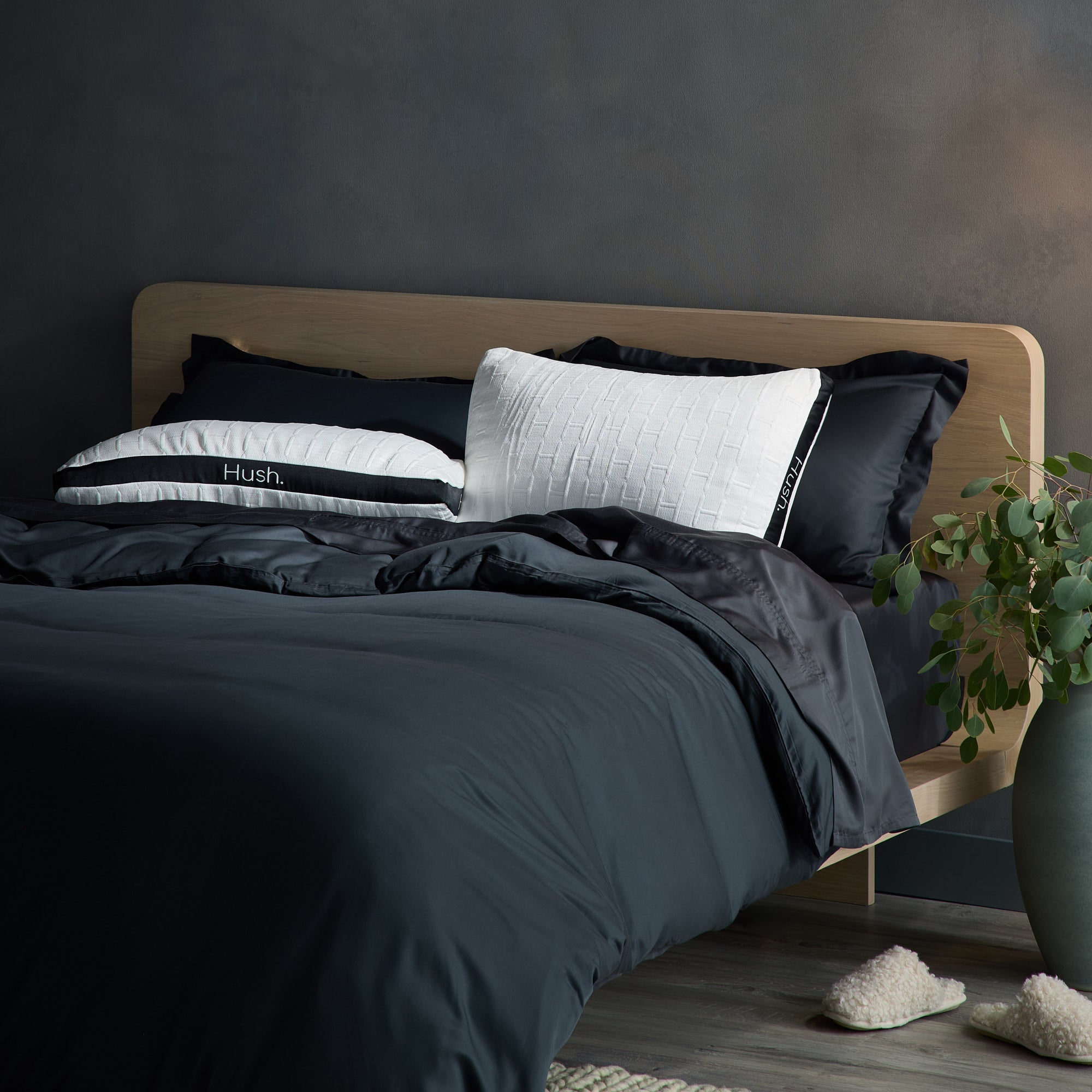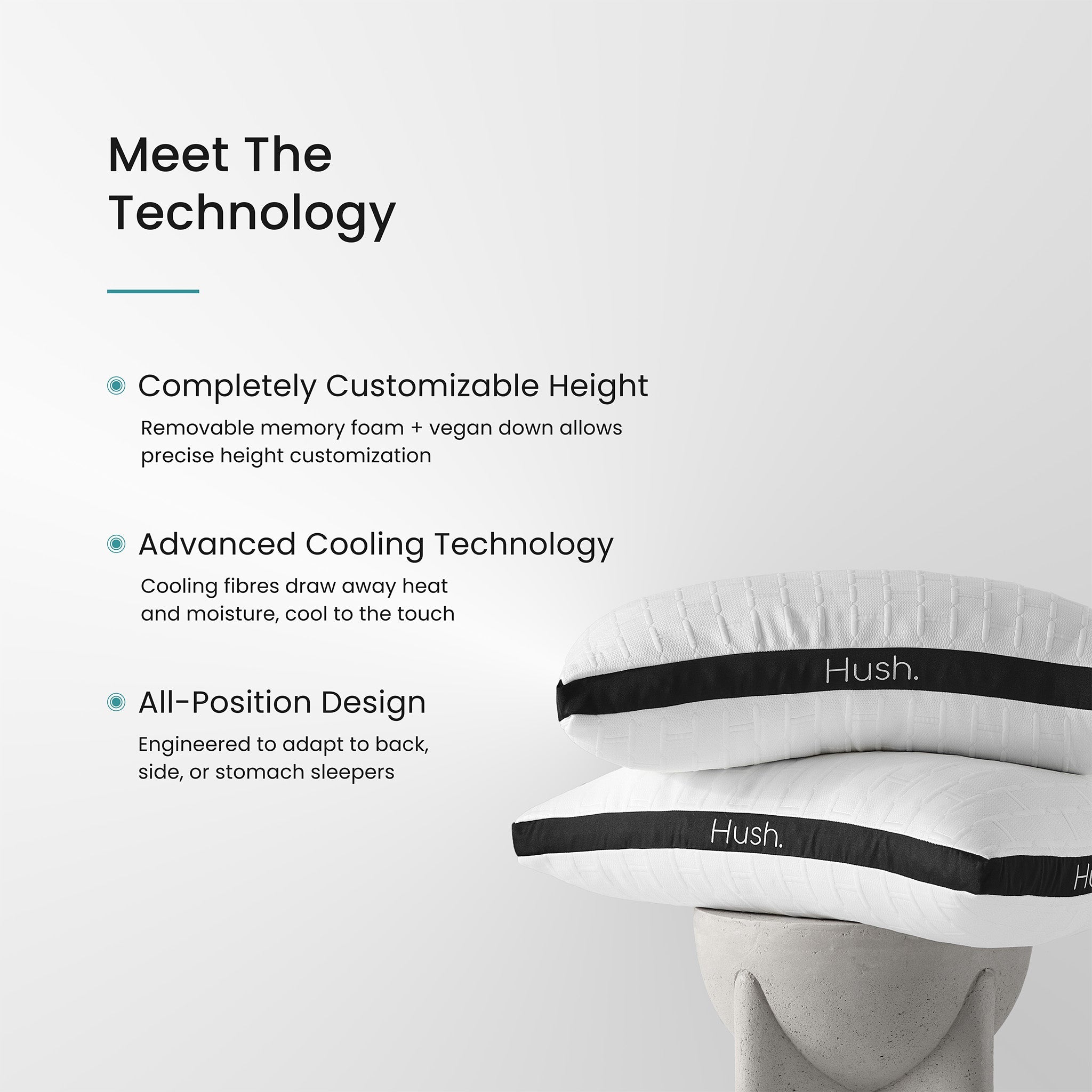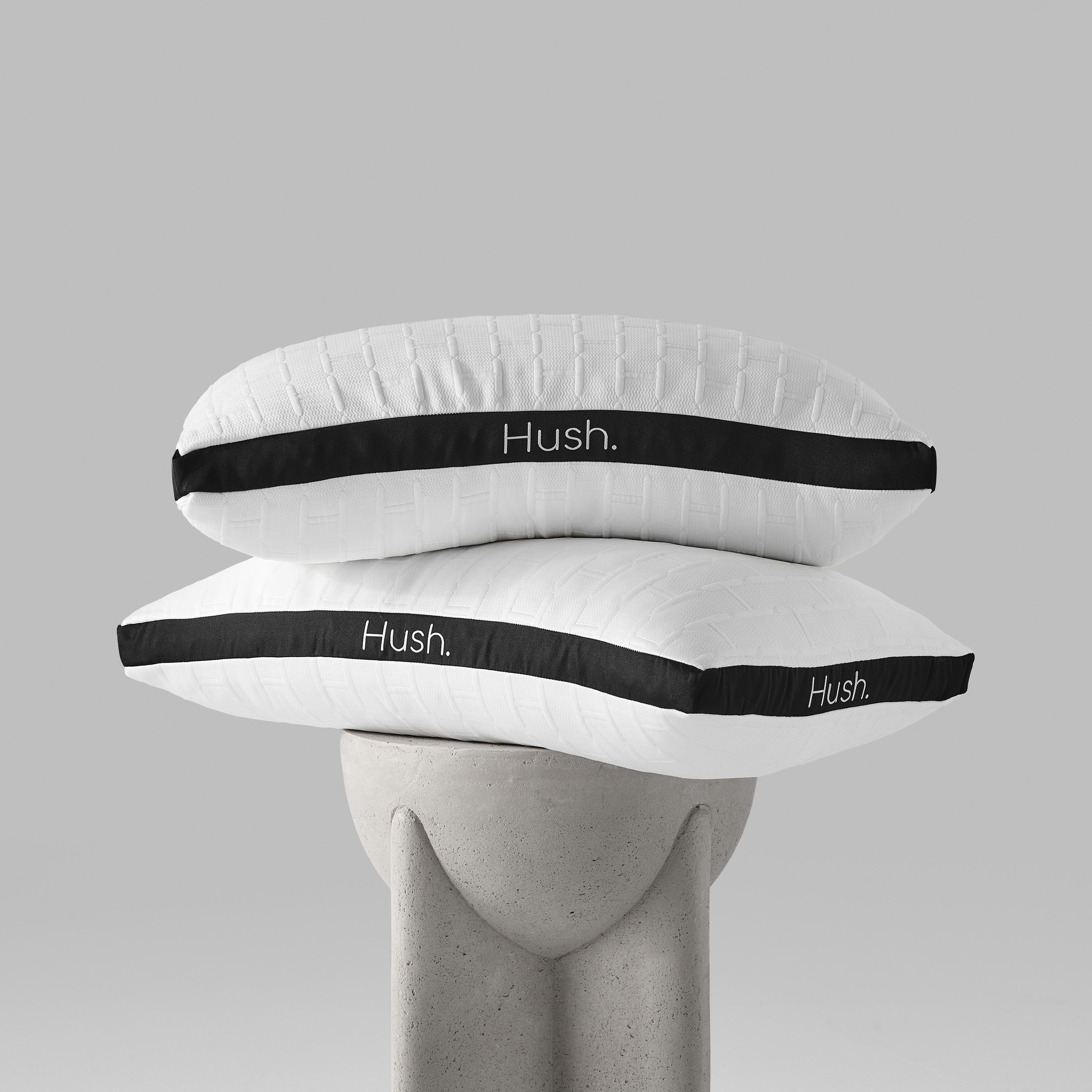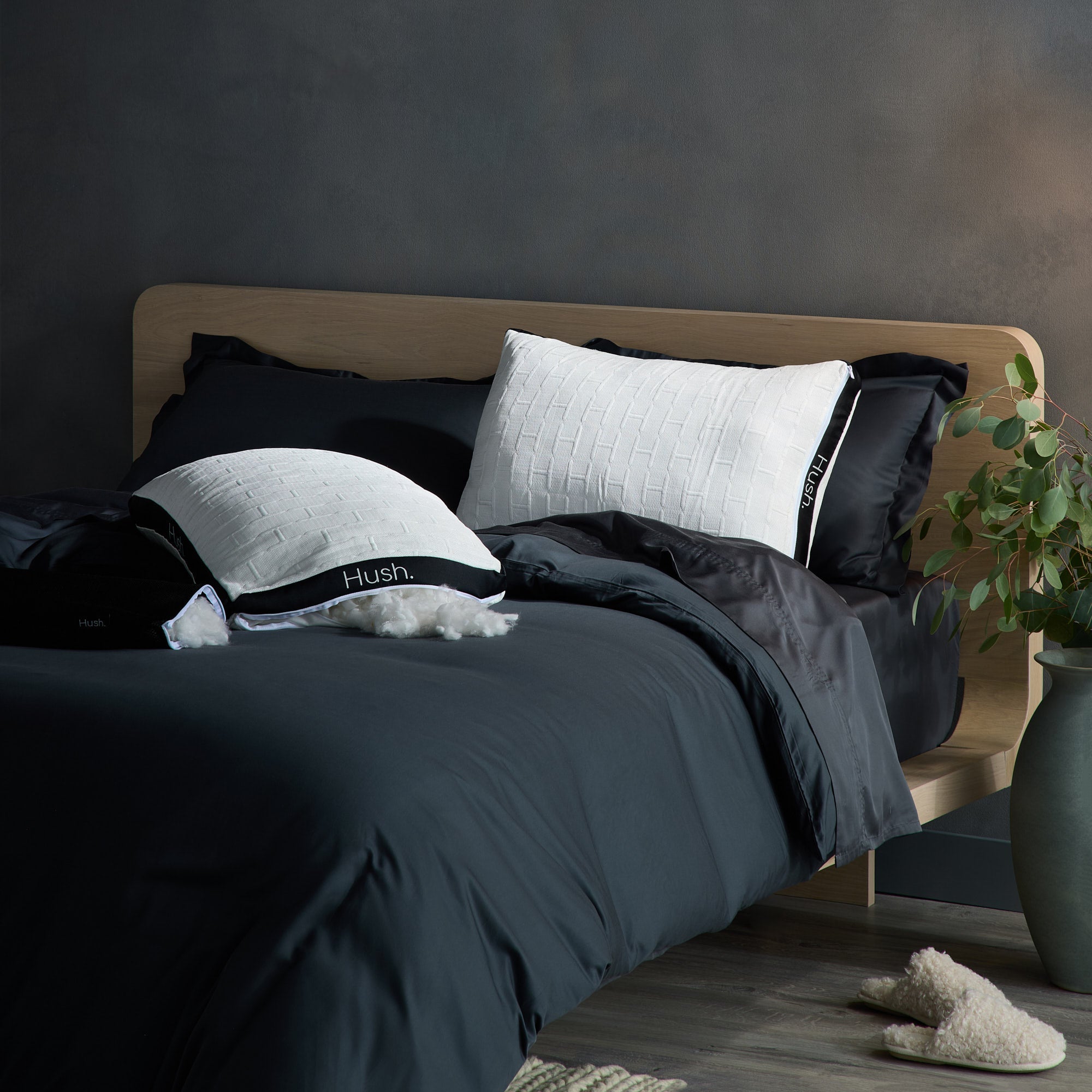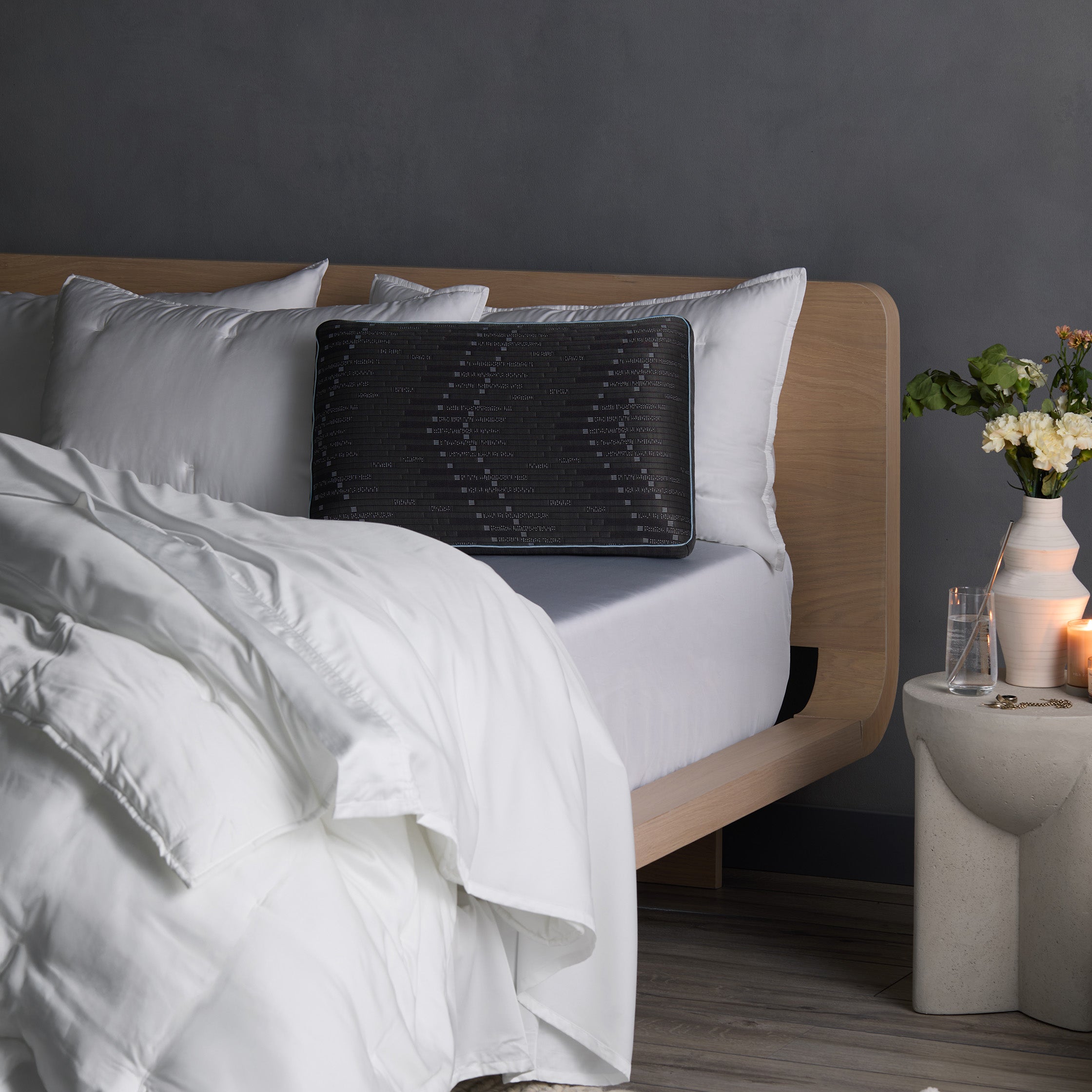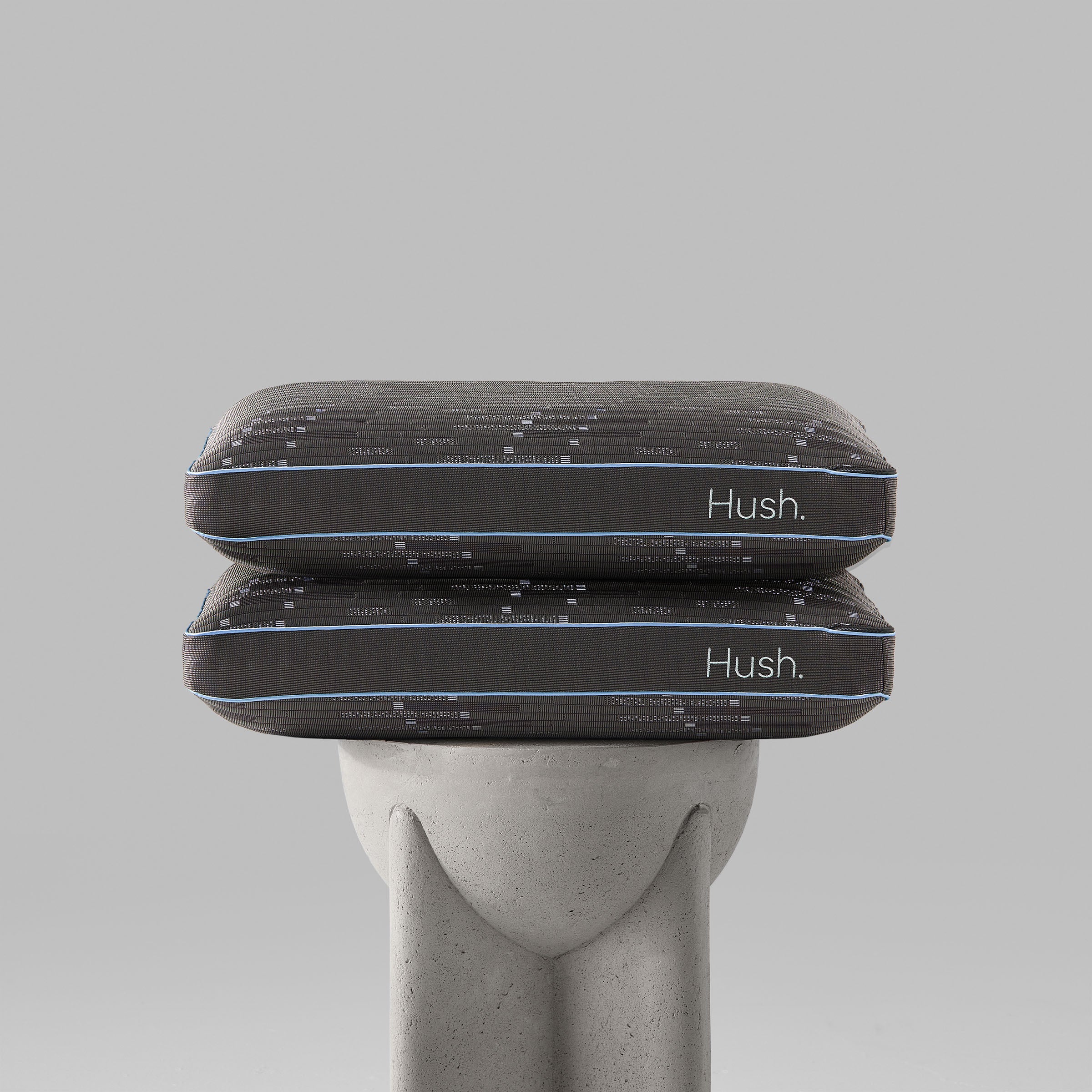Weighted blankets are all the rage these days, and you can’t help but be intrigued by the raving reviews they’ve gotten online (and on mainstream media).
But here’s the thing… you’re not ready to drop $200 on a blanket just yet.
After all, you’ve never tried one of these things before, and you’re skeptical about whether they can really alleviate your insomnia, and help you relieve stress.
So instead of buying a weighted blanket online, you’ve decided to whip out your sewing machine, and make a DIY weighted blanket instead.
In this blog post, we’ll walk you through how to make a weighted blanket, and discuss some of the problems you might encounter while doing this.
Alright, let’s get started!
How to Make a Weighted Blanket at Home
Follow this step-by-step tutorial that we’ve outlined below to learn how to make the best possible weighted blanket at home.

The actual sewing might take you anywhere for 4 hours to 12 hours, depending on how comfortable you are with working a sewing machine. That said, allocate more time to plan ahead, research fabrics and materials, and purchase all your supplies.
DIY Weighted Blanket: Planning the Measurements of Your Blanket
If you want to make a DIY weighted blanket, the first thing you’ll have to do is to figure out the dimensions and weight of your blanket.
With the dimensions of a weighted blanket, there’s no hard and fast rule to follow. As long as it’s large enough to cover you comfortably, that’s good enough.
⚠️ COMMON MISTAKE ⚠️
Here’s one area where many people go wrong -- they decide to make a “supersized” weighted blanket, so they can use one blanket for both themselves and their partner.
This isn’t ideal, because:
- The weight of your blanket is supposed to be tailored to your body weight for maximum benefit, and
- If you share the same blanket as your partner, and they toss or turn in their sleep, this will affect how the weighted blanket rests on you, and the results you get from using the blanket will be drastically different.
Bearing this in mind, you’ll want to make a weighted blanket sized for you, and use it independently of your partner.

Once you’ve figured out the approximate size of your blanket, the next step is to determine the size of each pocket that makes up your blanket.
Think of your blanket as a gigantic quilt that’s made up of many pockets. You’ll add an equal amount of filling into each pocket -- this ensures that the weight is evenly distributed, and you won’t encounter a scenario where one side of the blanket is “dragging” the other side down.
⚠️ COMMON MISTAKE ⚠️
Generally speaking, pockets are around 3 to 5 inches long and wide.
Some folks think that having smaller pockets will improve weight distribution, and they sew tiny pockets that measure 1” by 1” -- but if you do this, it’ll be tough for you to reach in and fill your pockets properly later on. This can also reduce airflow and make your blanket too hot.

On the other end of the spectrum, some folks opt for fewer and larger pockets, thinking that this will reduce the complexity of the project and allow them to complete the project faster.
While that’s true, you don’t want to have pockets that are too large, because this means that your filling will roll around in the pockets, and shift whenever you move under your blanket.
After deciding how large you want your pockets to be, reconcile the numbers with the approximate measurements you’ve chosen for your DIY weighted blanket to find out how many pockets you need. Here, add a buffer of 4 inches.
If you’re intending to construct a 40” wide and 55” long DIY weighted blanket with 5” pockets, here are the relevant calculations:
Width of blanket: 5” x 7 pockets = 35”. Add 4” to get 39”.
Length of blanket: 5” x 10 pockets = 50”. Add 4” to get 54”.
Based on the above, you’ll need a total of 70 pockets, and your DIY weighted blanket will measure 39” x 54”.
DIY Weighted Blanket: Planning the Weight of Your Blanket
Now that you’ve confirmed your measurements, let’s move on to determining the weight of your DIY blanket.
This is fairly simple -- all you have to do is calculate 10% of your body weight, and that’s how heavy your blanket should be.
Once you figure out the weight of your blanket, convert this into ounces, and calculate how much filling should go into each pocket.
Here’s an example:
Body weight = 150 lbs.
Weight of blanket = 150 x 10% = 15 lbs.
Converted into oz = 240 oz.
Weight per blanket = 240 / 70 pockets = 3.42 oz per pocket
When you start making your blanket, you’ll use your kitchen scale to weigh out the filling that goes into each pocket. That’s pretty much it!
DIY Weighted Blanket: Purchasing Supplies and Tools
The tools you’ll need to make a weighted blanket are:
- Kitchen scale
- Sewing machine
- Measuring tape
- Scissors
- Ruler
- Pins
- Vanishing pen or Tailor’s chalk
On top of that, you’ll also have to purchase fabric, filling and thread to make the blanket.
First, let’s talk about the fabric that you can use for your blanket.
If you look at the various weighted blanket brands online, you’ll see that many brands are selling weighted blankets made out of minky. This is a silky and soft fabric that’s commonly used in creating baby blankets, bathrobes, quilt backings, and similar items.

While minky is a great fabric for weighted blankets, folks who are making their own blankets should steer clear of this fabric.
Why do we say so? Well, it’s hard to see your stitches when you’re sewing on minky fabric, so if you mess up a step, it’ll be tough for you to remove your stitches and start over.
So: instead of minky, opt for other fabrics that are easier to work with, such as cotton or flannel.
As to how much fabric you need to purchase, get 2 x the measurements of your blanket (for the front and back), plus extra fabric to work with if you’re not confident that you’ll get your DIY blanket right the first time.
Now that you’ve got your fabric sorted, let’s move on to talk about the blanket filling.
Out of all the different fillings, we recommend using plastic poly pellets -- specifically those which are non-toxic and have a high melting point. You may purchase these at craft stores, or on Amazon.
⚠️ COMMON MISTAKE ⚠️
When buying your poly pellets on Amazon, don’t just buy the cheapest pellets you can find.
You’ll probably end up with low-quality pellets that will melt in the washing machine, and end up ruining your blanket.
On a separate note: don’t try and stuff your blanket with non-traditional fillings (buckwheat, sand, grain, etc) in order to save cost.
Once these organic materials come into contact with water, they start to expand. Because they’re porous, it’s unlikely that they’ll dry completely, unless you leave them out in the hot sun for several days a row. This means that you might experience problems with the fillings rotting.
DIY Weighted Blanket: Putting Your Blanket Together
We’ve now come to the fun (or stressful, depending on how you look at it!) part… putting your DIY weighted blanket together.
In this section, we’ll walk you through a tutorial from TheSpruceCrafts.
Step 1: Sew the front and back together
First, mark 2 inches inwards from each side, and mark out all your pockets.
Image via TheSpruceCrafts.
Next, sew the front and back pieces with their right sides together, leaving a 3/8" seam allowance as you go. Leave the top open for now.
Turn the blanket the right side out, open the seams, and continue sewing. Use a top stitch 1/4" from the edge, and start and end a short distance from the open side.
Finally, starting 2 inches from the open side, sew along the lines that you marked along the sides and the bottom of the blanket. Use a backstitch at the beginning and the end.
⚠️ COMMON MISTAKE ⚠️
Sewing a weighted blanket requires a heavy-duty needle -- so don’t use the needle that you commonly use to, say, sew a button back on.
Instead, go with a needle that’s thicker, such as the type that’s used for sewing denim.
⚠️ COMMON MISTAKE ⚠️
Sew with a small stitch length to keep the weighted stuffing beads in place.
Some people opt for a longer stitch length, thinking that this will make it easier for them to change the weight of their blanket further down the road.
However, this isn’t a good idea -- if your stitches are too long, it basically weakens the integrity of your blanket, and you risk the chance of your pellets spilling out.
Step 2: Sew in your vertical channels
To construct the “structure” of your blanket, sew all the vertical channels on the marked lines.
Image via TheSpruceCrafts.
Start at the closed bottom edge, and begin stitching just over the line of stitching that's 2 inches from the inner topstitching. Upon reaching the top 2-inch marketing, do a backstitch.
Pro-tip: TheSpruceCraft suggests starting at the center, and working your way out. Doing this prevents the sewing from getting off track, and the fabric from bunching.
Step 3: Add your fillings into the blanket
Weigh out the right amount of poly pellets using your scale, then place the pellets into the vertical channels.
Image via TheSpruceCrafts.
Shake the pellets to the bottom of the blanket while you go.
Step 4: Sew horizontally to close off each pocket
Using your pins, form a line of basting so that you can keep the filling in place.
From here, sew a horizontal line following the line that you’ve marked out. Start stitching just over the line of stitching that's 2 inches from the inner topstitching, and stop just over the inner topstitching on the other side.
Image via TheSpruceCrafts.
Again, backstitch at the beginning and end, and support the weight of the blanket so it doesn't pull while you sew.
Continue filling each channel and sewing horizontally, until all your pockets are sealed.
Step 5: Sew the remaining end of the blanket
Once you’re done sewing your pockets, fold the edges of the open side of the blanket in, and use a topstitch to close off the blanket.
Image via TheSpruceCrafts.
Your topstitch should run about 1/4" from the edge.
Making Your Own Weighted Blanket: is it Worth Your Time?
If you’re an experienced sewer, and you want to take on the challenge of making a DIY weighted blanket, by all means, go ahead.
But if you’re fairly new to sewing, and you haven’t attempted many sewing projects before, you might find it easier to just purchase a weighted blanket online.
Some of the common issues people encounter when trying to create a homemade weighted blanket include:
- Needles breaking
- Weight not being distributed evenly
- Accidentally creating a blanket that's too light or too heavy
- Sewing machine jamming
- Blanket leaking pellets
Bearing this in mind, you might find yourself having to re-do certain steps, and go back and forth before you eventually complete your weighted blanket DIY.
On top of that, note that the materials required to assemble a weighted blanket don’t come cheap. A 10 to 20 lb bag of plastic poly pellets will cost you anywhere from US$30 to US$40, and your costs will quickly snowball when you account for your other materials.
Want to Experience the Magic of a Weighted Blanket?
We get that you don’t feel comfortable with spending $200 on a weighted blanket, because you don’t know FOR SURE if it works.
That’s why we offer an awesome 100 Night Guarantee here at Hush Blankets.

How this works is simple: just buy a weighted blanket from us, and you’ll get to try it out for 100 nights without any risk.
If you don’t like the blanket, you can ship it back to us, and we’ll process a full refund for you.
So much easier -- and faster -- than making your own homemade weighted blanket, don’t you think? ;)
Click here to get your very own Hush Blanket, and experience the magic for yourself.
